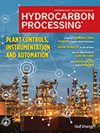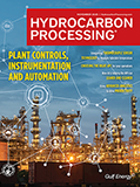Loss Prevention
HPIn Europe: How German refiners sped up clean fuels rules to save their heating oil business
European refiners are nearing the end of a decade of rapid change—some might say a revolution—in fuel specifications. For road fuels, at least, sulfur levels have gone from being a political..
One confirmed dead in Pemex refinery explosion
Pemex suffered an explosion at its Cadereyta refinery outside of Monterrey, Mexico.
Calculating the temperature distribution in horizontal vessel saddle supports
The heat-transfer theory of cooling fins is applied
Hydrobulging of storage tanks and its effect on first support selection
Case studies prove that installing variable spring supports is a viable option
HP Water Management: Utility water boot camp for process engineers—Part 1
The refining and petrochemical industries employ a large number of process engineers. Plants often assign newly graduated engineers to the utility water area. Process engineers in each operating unit ..
Albemarle to increase prices of mineral flame retardants
Albemarle Corp. will increase prices of its MARTINAL flame retardants on global shipments beginning October 1, 2010, or as contracts allow at the following rates:  MARTINAL ON ground and low-visc..
Valve design reduces costs and increases safety for US refineries
The goals were achieved by using alloys with superior corrosion resistance
Estimating tank calibration uncertainty
Use these calculations for a specific tank calibration
HP Automation Safety: Cyber security certification for automation products and suppliers
The United Steelworkers Union (USW) issued a press release chastising the oil industry for the series of fires and explosions that keep happening at US refineries. USW pointed out that there has been ..
Frontier Oil reports fire at Cheyenne refinery crude unit
Frontier Oil Corp. experienced a fire yesterday at approximately 5:40 a.m. MDT in the crude unit at its refinery in Cheyenne, Wyoming. The fire was extinguished within approximately one hour by refinery and city fire personnel.

- UPM unlocks new bio-based markets as Leuna biorefinery produces its first commercial product 12/19
- Stamicarbon awarded technology licensing contract for new urea plant in Eastern China 12/19
- Ford takes $19.5-B writedown on EV business 12/19
- Babcock & Wilcox awarded $40-MM contract for advanced wet gas scrubbing technology at Canadian petroleum refinery 12/19
- Aarti Industries secures methanol and toluene feedstock supply through multiple long-term contracts 12/19
- U.S. judge blocks Michigan from shutting down Enbridge's Line 5 oil pipeline 12/19




